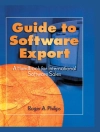This book presents a comprehensive guide to the design of playing robots and the related play experiences. Play is a natural activity for building and improving abilities, and it reveals important particularly for persons with disabilities. Many social, physical and cultural factors may hinder children with disabilities from fully enjoying play as their peers. Autonomous robots with specific characteristics can enhance the ludic experience, having implications for the character of the play and presenting opportunities related to autonomy and physical movement, the very nature of robots. Their introduction into play thus provides everybody, and in particular persons with disabilities, new possibilities for developing abilities, improving general status, participating in social contexts, as well as supporting professionals in monitoring progress.
This book presents a framework for the design of playful activities with robots, developed over 20 years’ experience at AIRLab – POLIMI. Part 1 introduces the play concepts and characteristics, and research results about play of children with different kinds of impairments. Part 2 focuses on implementing robots able to play. The design of playful activities is discussed, as well as the necessary characteristics for them to be useful in both general play and activities involving disability-related limitations. In Part 3, the defined framework is used to analyze possibilities involving robots available on the toy market, robots developed at research labs, and robots to be developed in the next future. The aim of the book is to give developers, caregivers, and users a set of methodological tools for selecting, exploring, and designing inclusive play activities where robots play a central role.Cuprins
Chapter 1 – Introduction.- Part 1: Play and Disability.- Chapter 2 - Play and games.- Chapter 3 - Play and disabilities.- Part 2: Playing Robots.- Chapter 4 - Playful robots.- Chapter 5 - Robots and playful activities.- Chapter 6 - Role of robots in playful activities for people with disabilities.- Part 3: Playing Robots Experiences.- Chapter 7 - Existing robotic toys.- Chapter 8 - Experimental robots.- Chapter 9 - Ethical, social, and psychological issues.- Chapter 10 - To infinity and beyond.- Chapter 11 - Conclusion.
Despre autor
Andrea Bonarini is a full professor at the Politecnico di Milano, Italy, teaching courses about Robotics and AI at the Industrial and Information Engineering School and at the Design School. He is also in charge of the Artificial Intelligence and Robotics Lab. Over the course of 25 years, he has developed, in conjunction with his students, more than 40 different playing robots, many of which are oriented towards people with disabilities, the latter created as part of a program that he launched through the Playbot4All initiative. His research interests include autonomous robotic agent design, human–robot interaction, robot-based entertainment, affective computing, intelligent data interpretation, reinforcementmachine learning, and fuzzy systems.
Serenella Besio is a full Professor in Didactic and Special Education at the University of Bergamo, Italy. She teaches courses on disability and educational topics. She has coordinated national and international projects on the use of play, and playing robots, for rehabilitation, including the EU COST network “LUDI – play for children with disabilities”. Her main research topics include assistive technologies and the promotion of play rights for children with disabilities.












